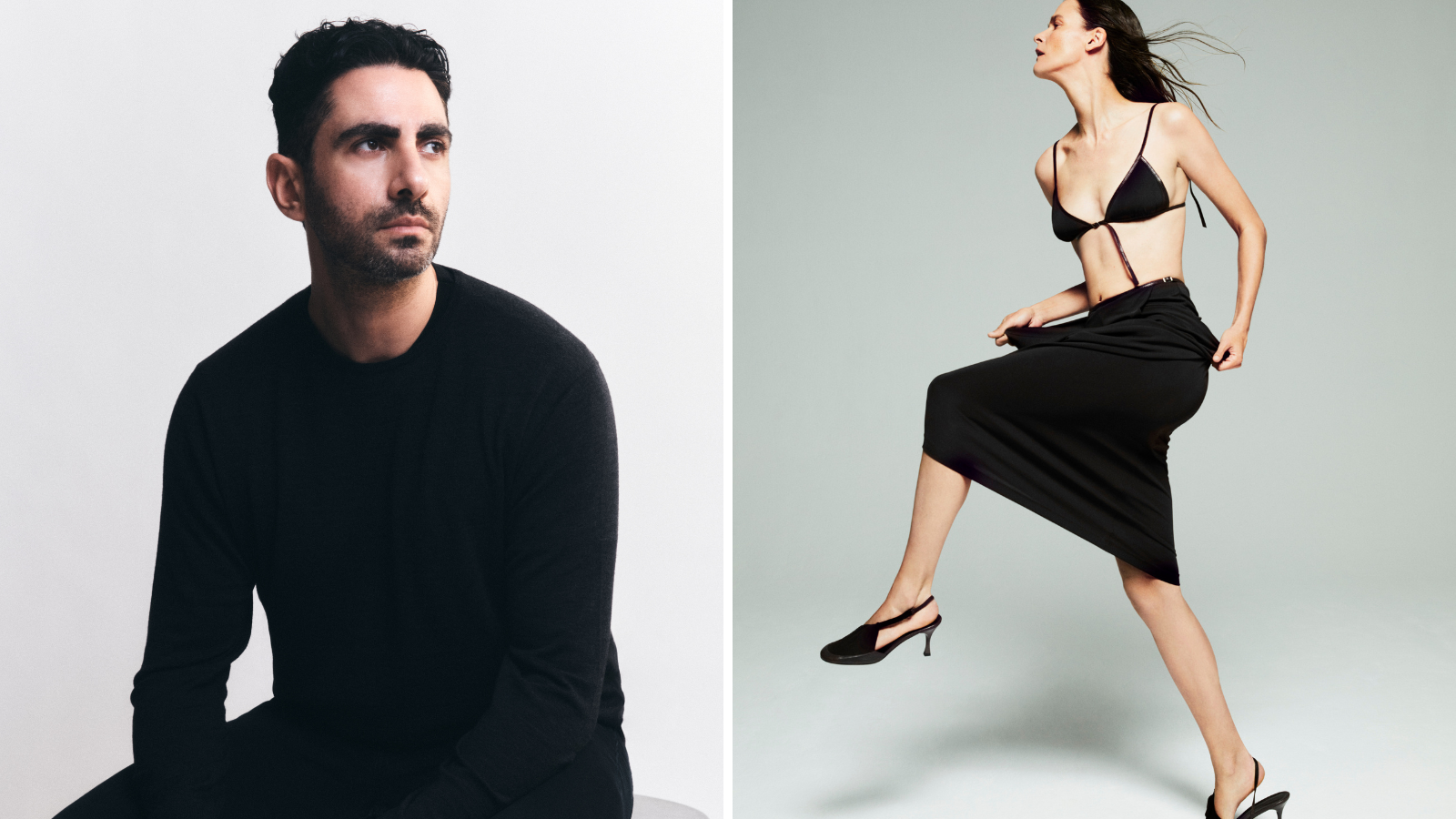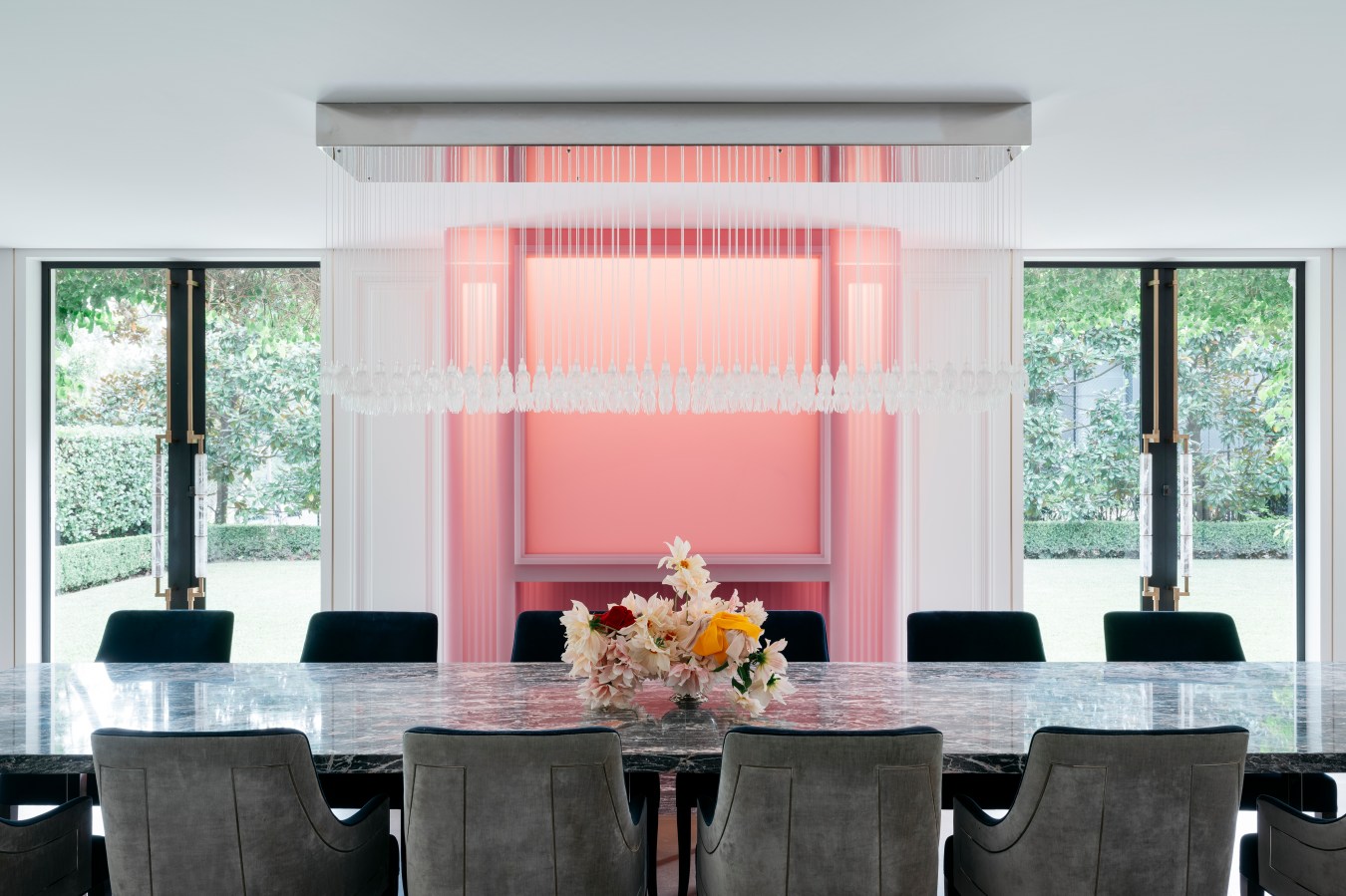For Koichi Takada, great architecture doesn’t just stand out – it gives back. The Japan-born Australian architect is on a mission to create greener, more human cities.
This story was featured in Issue 16 of Forbes Australia. Tap here to secure your copy.
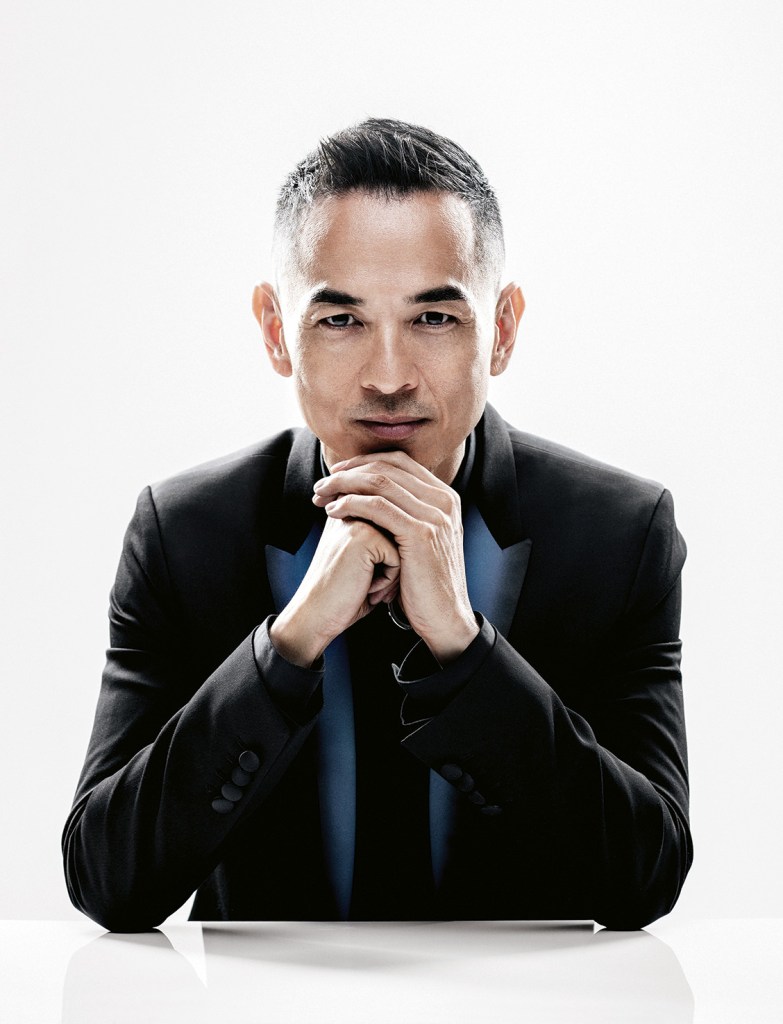
What inspired you to become an architect?
I was 16 years old growing up in Tokyo. I saw an image of Manhattan with the skyscrapers, and I just fell in love. I decided to go to New York to study architecture. But when I got there, I hated it – inside this concrete jungle. I wanted to go home.
Then I discovered New York Central Park, the green lung of Manhattan. My childhood was about growing up in nature. In the western suburbs of Tokyo, we had an abundance of nature, but as I grew up, that nature started to disappear in front of me.
When did you have that notion that you could make a difference with architecture?
I discovered that New York Central Park was man-made. It was not natural, but was intended by the landscape architects. It took over 200 years to become what it is today. ‘Interesting,’ I thought. ‘Why can’t you do architecture just like Central Park?’ It took me almost 35 years to realise that dream. Gradually, I could see that the idea of nature-inspired architecture was imminent.
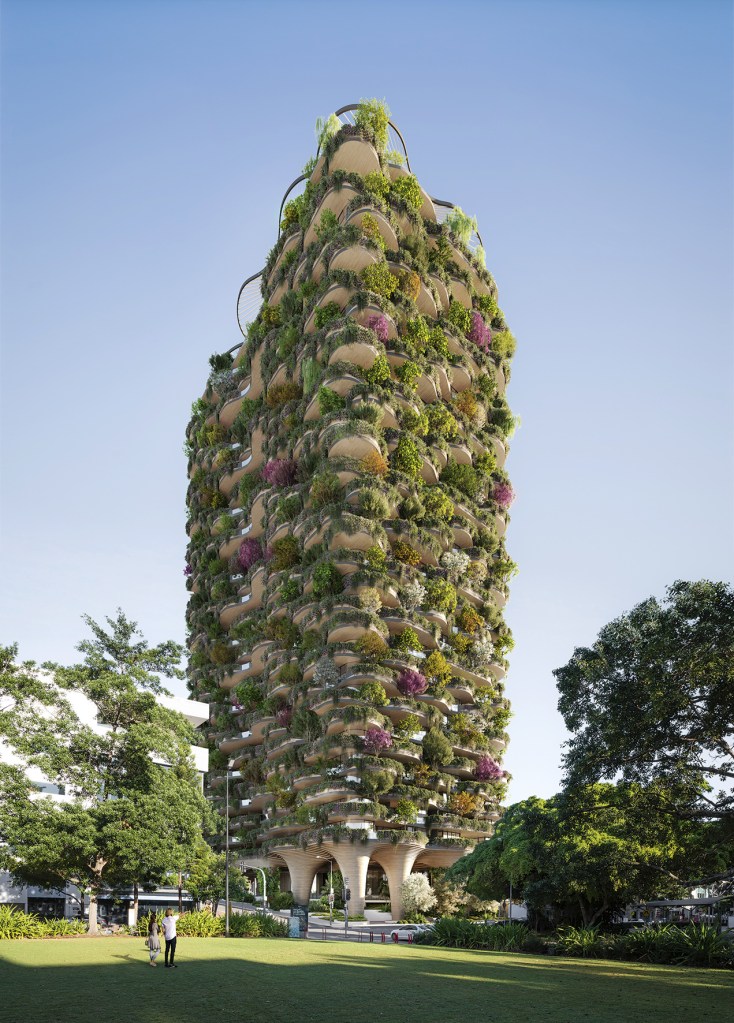
When did you have the confidence to try it with a client?
My first test at international level was when we were competing in an interior design scope for the National Museum of Qatar. The client was the royal family and their representatives. We were
a very small practice just talking about what I call ‘mass greening’ – as opposed to mass production. It was hilarious when I went to Doha to present to the royal family. Every security point took 20 minutes to clear, so by the time I got there, we were very late. I could not find any common ground. I was nervous, and I froze.
I was talking, but nothing penetrated until we started talking about nature. Despite the cultural differences, we could instantly connect. I wanted to talk about the desert. They wanted to talk about trees. That 15-minute presentation ended up being an hour. We knew we had landed the project. Then I went to different cities – LA, London, Tokyo, Shanghai – around the world, people are exactly the same, craving nature. It’s a common language, like music.
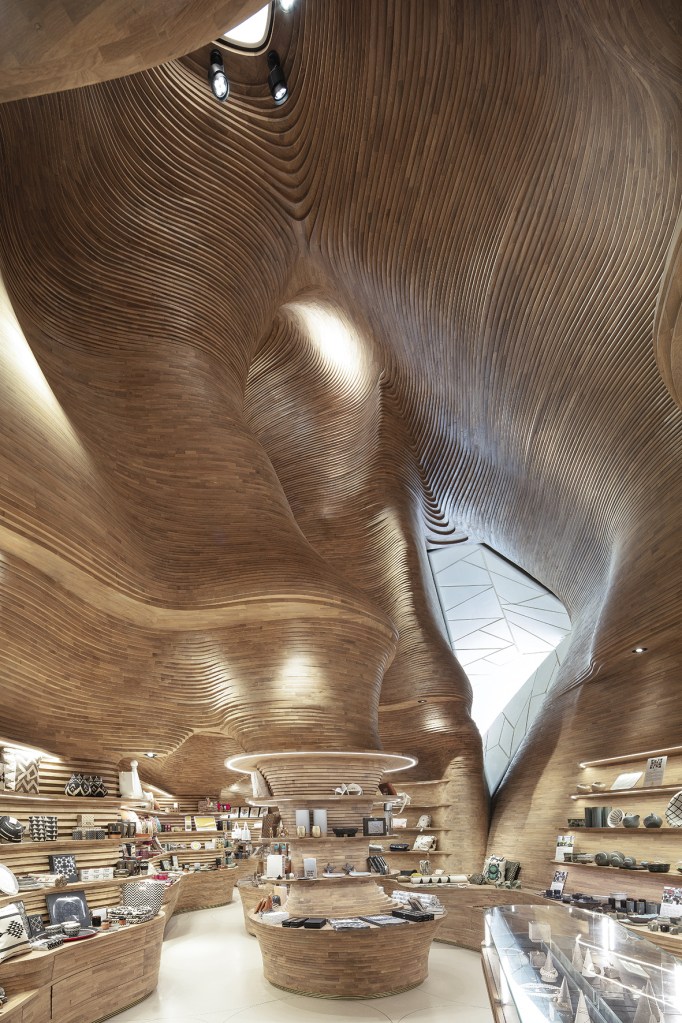
Who is your favourite type of client?
We like the dreamers. We are good at selling dreams. We can see in their reactions, the more emotional reactions, that we succeeded. This type of visionary client can be the game-changer in creating a new path to the future.
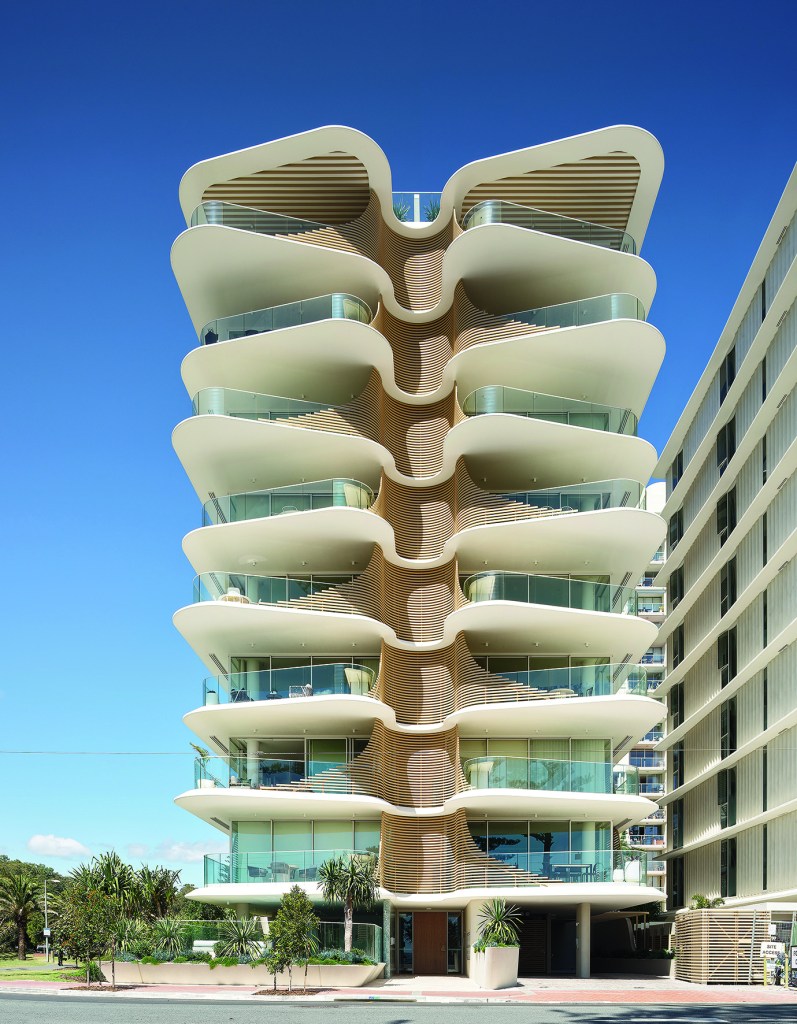
That’s Norfolk [a Gold Coast apartment building] I see there behind you. What type of dreamer was behind that one, and did you take in a pine cone to sell the idea?
It’s a beautiful site because there’s a north aspect looking towards Surfers Paradise. The only problem was there was the Norfolk pine in front of us. I remember talking about that tree and how disturbing it was to this picture-perfect view. Then we learned that it was a heritage tree, and we saw opportunity, as we always do.
I picked up a Norfolk pine cone on the floor, and we started researching. So, the Norfolk pine depends on the weather if it’s opened or closed. On a good day, it opens, and it spreads the seeds. I think, ‘Wow! Nature is amazing.’ We essentially created a building inspired by the Norfolk pine cone, staggering balconies, creating one that’s the sunnier side, one in the shady area, so you have an alternate way of enjoying the lifestyle. And it creates this sculptural form. There’s an aperture that can fully open, fully close, double glaze in the screen, almost like a layering, creating the perfect environment, just like the Norfolk pine does. On a nice day, you can open right up and enjoy maximum connection to the wonderful nature in front. On a cold, windy day, you shut it and still enjoy the sun.
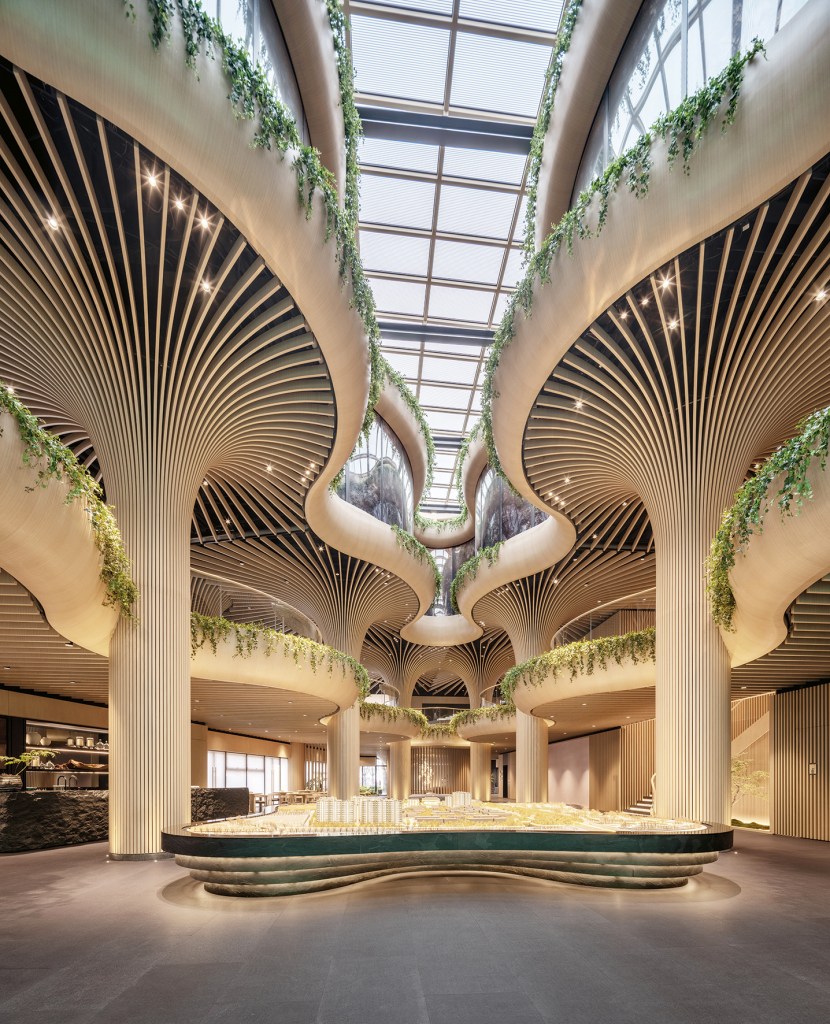
One that’s even more relevant in terms of how we as architects find this purpose and do more than we take, is this project in Shanghai [he points to another picture behind him] that we nicknamed Solar Trees. When I first went to Shanghai to see the client, we looked around the site, and I was quite disturbed. It was urbanising, so there were a lot of opportunities for architects. However, I could see nature was disappearing in no time – cutting trees, cutting the mountain. When we investigated in a satellite photo less than 15 years ago, this area had been fully forested. You could imagine how beautiful it would have been. They’d had this traditional wet market and dry market within the forest, but that was all gone.
I talked to the clients and said, ‘Can we create a place that is the symbol for the future? A forest-nature inspired architecture – where you preserve the traditional dry/wet market, so people can still come just like before and do the traditional marketplace under the forest?’
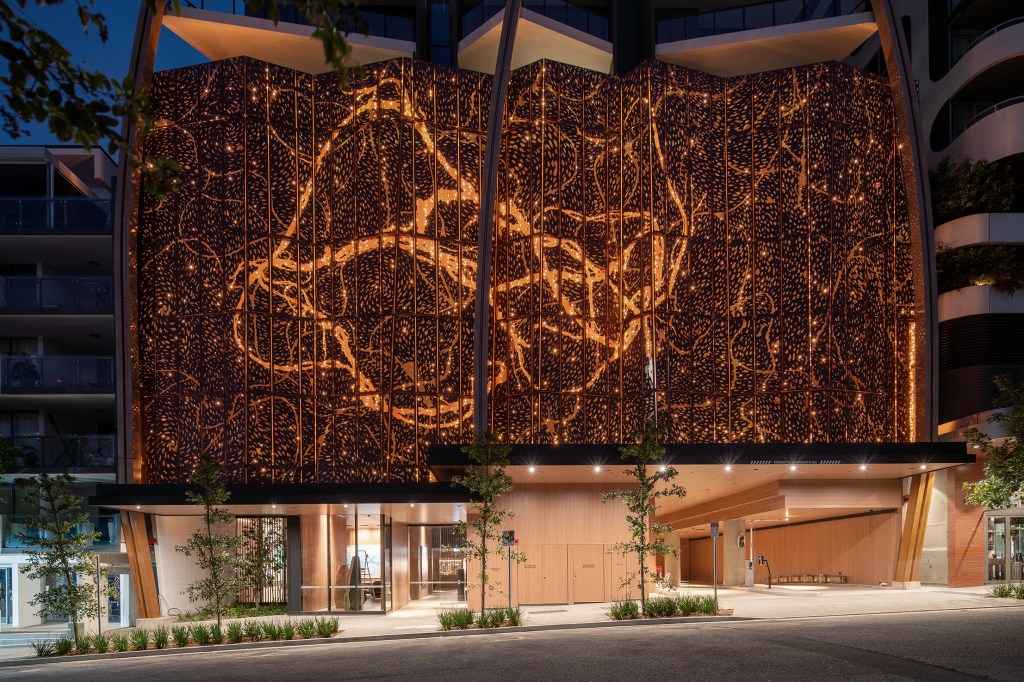
Our master plan was also about pedestrianisation. By removing the cars, you could start to regrow those trees. You could grow them up to six, seven storeys. Imagine 48 very dense buildings amongst a mature tree canopy so people can live in a forest in the middle of Shanghai. And this would possibly inspire a greener future for China.
This is the sort of thing that we believe architects can contribute.
What brought you to Australia?
I came in 1998. I came down the stairs of the aeroplane, and I remember the air, the sun, the blue sky. I instantly fell in love. Then, the people were incredibly accessible – nice. The food, the nature, the beach, everything. My first impression was a city and nature in love. Now, I call Australia home and have my children and wife here. We love Australia. This idea of a lifestyle based on the environment, and connecting to nature; we export this to our overseas projects. Our clients love it because they see Australia as this wonderful environment and wonderful culture.
What does your own house look like?
I’m a big believer in co-living, so we live in an apartment. By 2050, 70% of the world will be living in urbanised areas like Sydney. So I believe in contributing to this high-density living. We recently finished a project called Upper House [in Brisbane], and I have my place there. When you go inside, it is very much nature-inspired, a very calming space – you feel like you’re going back to nature.
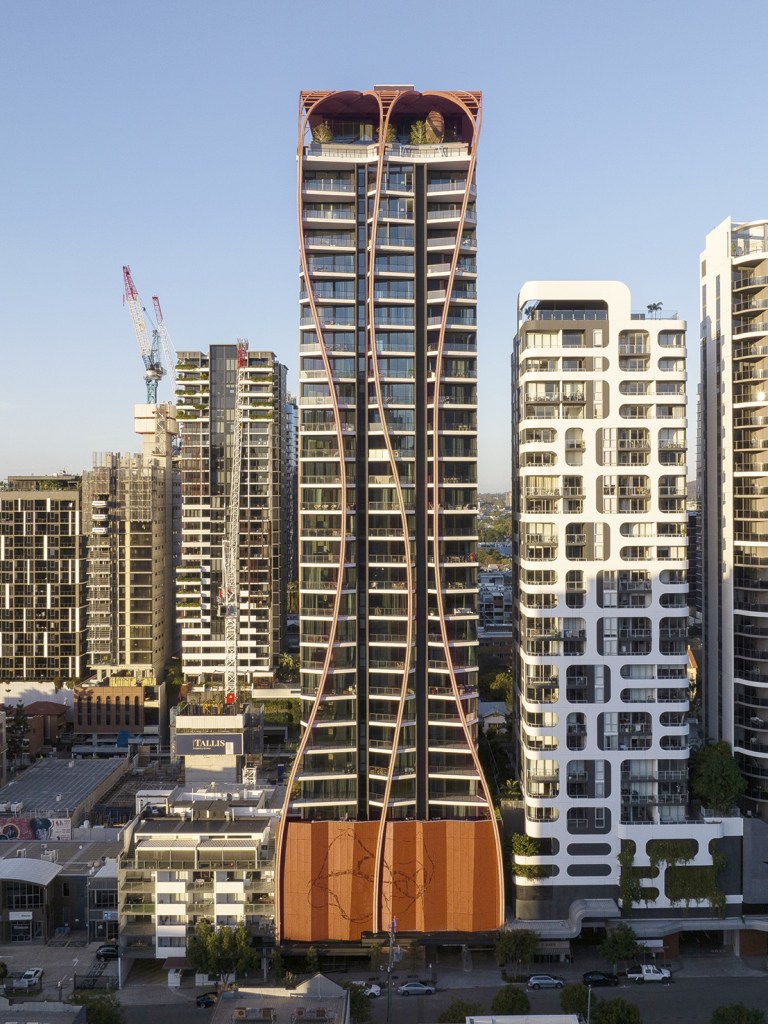
We have nature-inspired material finishes, but we also play nature sounds that calm you down. We designed a scent so you can smell the forest as you come in. And the artwork is also themed by the natural environment of Brisbane.
I also have an apartment in Sydney, so we go back and forth. Inside the apartment, there’s ample natural light and a lot of cross ventilation, so light and shadow always play. My kids migrate towards the light, and when they study, they go to the shade. How you connect with nature depends on what you do.
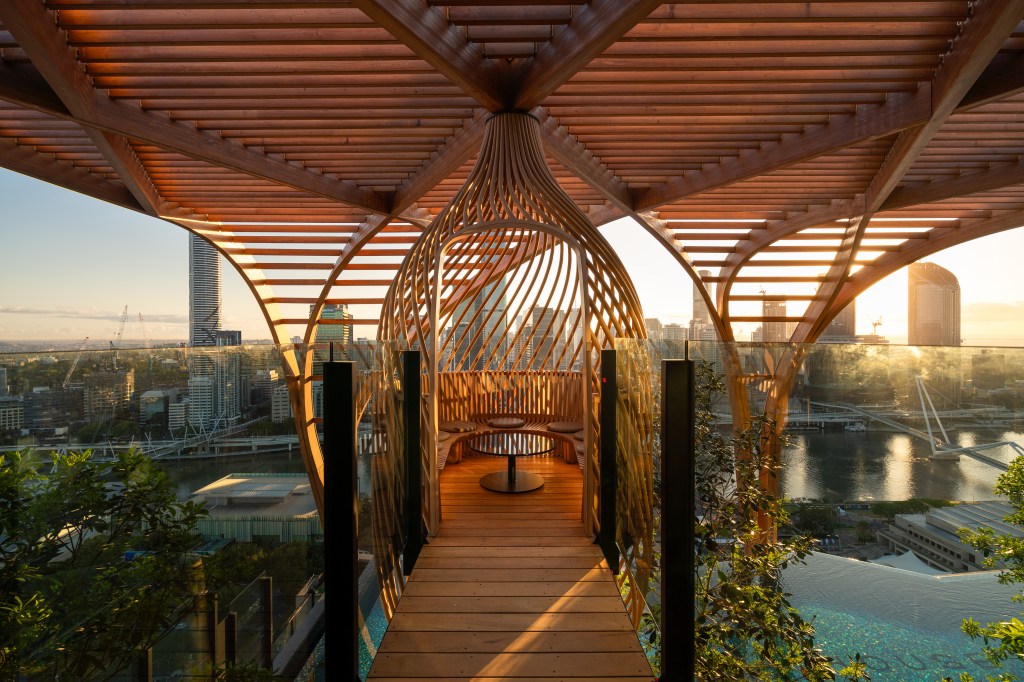
[Koichi’s Sydney apartment building, One Central Park, has an exterior covered in plants.] Sorry to be mundane and Australian, but how do you keep the gutters clean?
You do need to do the maintenance. I grew up in Japan. Our house endured an earthquake, typhoons, four seasons, very hot versus very cold. You live with all the things that nature throws at you. This is a fundamental value I learned in childhood. I remember going up to the roof with my dad to clean the tiles and tatters after a typhoon. Sometimes, we just sat on the roof. That was the most beautiful moment with my dad. It was super dangerous because we were on the third storey – my hand was kind of shaking. Then he said, ‘Look ahead’. There was Mount Fuji. I never forget that feeling. I cherish it and I’m hoping to do similar with our sons, and it starts with something as simple as asking the boys to water plants on the balcony.
It’s a small lesson, but in a big picture, it starts to contribute to creating a novel future with the planet.


